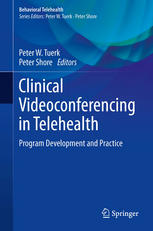

Most ebook files are in PDF format, so you can easily read them using various software such as Foxit Reader or directly on the Google Chrome browser.
Some ebook files are released by publishers in other formats such as .awz, .mobi, .epub, .fb2, etc. You may need to install specific software to read these formats on mobile/PC, such as Calibre.
Please read the tutorial at this link: https://ebookbell.com/faq
We offer FREE conversion to the popular formats you request; however, this may take some time. Therefore, right after payment, please email us, and we will try to provide the service as quickly as possible.
For some exceptional file formats or broken links (if any), please refrain from opening any disputes. Instead, email us first, and we will try to assist within a maximum of 6 hours.
EbookBell Team

5.0
58 reviewsResearch findings and dissemination are making healthcare more effective. Electronic health records systems and advanced tools are making care delivery more efficient. Legislative reforms are striving to make care more affordable. Efforts still need to be focused on making healthcare more accessible.
Clinical Videoconferencing in Telehealth takes a comprehensive and vital step forward in providing mental health and primary care services for those who cannot make traditional office visits, live in remote areas, have transportation or mobility issues or have competing demands. Practical, evidence-based information is presented in a step by step format at two levels: for administrators, including information regarding selecting the right videoconferencing technology, navigating regulatory issues, policy temples, boilerplate language for entering into care agreements with other entities and practical solutions to multisite programming; and for clinicians, including protocols for safe, therapeutically sound practice, informed consent and tips for overcoming common technical barriers to communication in clinical videoconferencing contexts. Checklists, tables, templates, links, vignettes and other tools help to equip professional readers for providing safe services that are streamlined and relevant while avoiding guesswork, false starts and waste. The book takes a friendly-mentor approach to communication in areas such as:
Logistics for administrators:
Protocols for clinicians:
ClinicalVideoconferencing in Telehealth aptly demonstrates the promise and potential of this technology for clinicians, clinic managers, administrators and others affiliated with mental health clinical practices. It is designed to be the comprehensive “one-stop” tool for clinical videoconferencing service development for programs and individual clinicians.